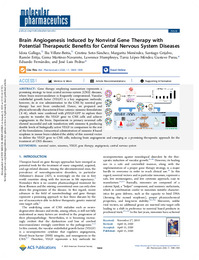Please use this identifier to cite or link to this item:
https://hdl.handle.net/11000/34581Full metadata record
| DC Field | Value | Language |
|---|---|---|
| dc.contributor.author | Gallego, Idioa | - |
| dc.contributor.author | Villate Beitia, Ilia | - |
| dc.contributor.author | Soto-Sánchez, Cristina | - |
| dc.contributor.author | Menéndez, Margarita | - |
| dc.contributor.author | Grijalvo, Santiago | - |
| dc.contributor.author | eritja, ramon | - |
| dc.contributor.author | Martínez Navarrete, Gema | - |
| dc.contributor.author | Humphreys, Lawrence | - |
| dc.contributor.author | López Méndez, Tania | - |
| dc.contributor.author | Puras, Gustavo | - |
| dc.contributor.author | Fernández, Eduardo | - |
| dc.contributor.author | Pedraz, José Luis | - |
| dc.contributor.other | Departamentos de la UMH::Histología y Anatomía | es_ES |
| dc.date.accessioned | 2025-01-16T17:32:52Z | - |
| dc.date.available | 2025-01-16T17:32:52Z | - |
| dc.date.created | 2020-06-01 | - |
| dc.identifier.citation | Mol Pharm . 2020 Jun 1;17(6):1848-1858 | es_ES |
| dc.identifier.issn | 1543-8392 | - |
| dc.identifier.uri | https://hdl.handle.net/11000/34581 | - |
| dc.description.abstract | Gene therapy employing nanocarriers represents a promising strategy to treat central nervous system (CNS) diseases, where brain microvasculature is frequently compromised. Vascular endothelial growth factor (VEGF) is a key angiogenic molecule; however, its in vivo administration to the CNS by nonviral gene therapy has not been conducted. Hence, we prepared and physicochemically characterized four cationic niosome formulations (1−4), which were combined with pVEGF-GFP to explore their capacity to transfer the VEGF gene to CNS cells and achieve angiogenesis in the brain. Experiments in primary neuronal cells showed successful and safe transfection with niosome 4, producing double levels of biologically active VEGF in comparison to the rest of the formulations. Intracortical administration of niosome 4 based nioplexes in mouse brain validated the ability of this nonviral vector to deliver the VEGF gene to CNS cells, inducing brain angiogenesis and emerging as a promising therapeutic approach for the treatment of CNS diseases. | es_ES |
| dc.format | application/pdf | es_ES |
| dc.format.extent | 11 | es_ES |
| dc.language.iso | eng | es_ES |
| dc.publisher | ACS Publications | es_ES |
| dc.rights | info:eu-repo/semantics/openAccess | es_ES |
| dc.rights | Attribution-NonCommercial-NoDerivatives 4.0 Internacional | * |
| dc.rights.uri | http://creativecommons.org/licenses/by-nc-nd/4.0/ | * |
| dc.subject | nonviral vector | es_ES |
| dc.subject | niosomes | es_ES |
| dc.subject | VEGF | es_ES |
| dc.subject | gene therapy | es_ES |
| dc.subject | angiogenesis | es_ES |
| dc.subject | central nervous system | es_ES |
| dc.title | Brain Angiogenesis Induced by Nonviral Gene Therapy with Potential Therapeutic Benefits for Central Nervous System Diseases | es_ES |
| dc.type | info:eu-repo/semantics/article | es_ES |
| dc.relation.publisherversion | doi: 10.1021/acs.molpharmaceut.9b01213 | es_ES |

View/Open:
Brain Angiogenesis Induced by Nonviral Gene Therapy with Potential Therapeutic Benefits for Central Nervous System Diseases.pdf
3,6 MB
Adobe PDF
Share:
.png)
